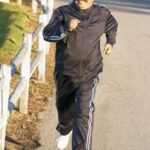Dr Richa Kulkarni discusses how posture can affect your overall health.
Do you believe your posture enhances efficiency?
Yes, it does. Poor posture decreases efficiency in work and maximises stress to the body, whereas good posture increases workplace efficiency and reduces the stress on the body. Good posture keeps your muscles active while you are working. So, just a little change to your posture while sitting or standing can be beneficial for your overall health.
Posture
|
Posture is the intentionally or habitually assumed position we take up while sitting, walking, standing and sleeping. Certain muscles of our body regulate our posture every day without our realisation. The muscle clusters such as hamstrings and back muscles are responsible for keeping the body posture upright, against the gravitational pull. On the other hand, ligaments are responsible for holding the skeletal structure of the body against the gravity, while the posture muscles promote movement and actions such as sitting or walking. If the body keeps taking up the same incorrect position every day, the posture muscles get stressed and start growing in the direction of the pressure.
This eventually results into bad posture.
Posture is basically divided in two parts – static (at rest, e.g., while sitting or standing) and dynamic (in motion, e.g., while walking or running).
Causes of postural problems
Pre-historic human’s ape-like anatomy used to bear all the body weight on both hands and legs. With evolution, the lower limbs
were required to bear the entire body weight as the upper limbs developed to perform complex tasks. This transition has also dramatically changed the back (core) bio-dynamics (movement of secondary curves). But now days, due to the changing lifestyle, human beings are again going back to an ape-like posture which is increasing the incidences of postural problems.
Pros and Cons
Sitting on a chair has a lot of advantages like:
- It is more
- Lesser muscular fatigue (especially with back support, foot rest and arm rest)
The chair-desk set up is however a double- edged sword. It has multiple advantages but has more disadvantages that cannot be dismissed because sitting itself is a poor posture. Sedentary lifestyle and prolonged sitting can lead to a poor posture and problems like:
- Obesity: It is caused due to calorie saving and lesser physical activity.
- Flabby abdomen/paunch: Slouching or stooping decreases the distance between the sternum and the pelvis, which hampers the normal breathing pattern. Also, there is disuse of the abdominal muscles which eventually leads to obesity.
- Back muscles weakness: A comfortable chair can lead to prolonged seating in a reclined This could lead to numbness in the back. Also, inactivity can lead to back muscle exhaustion due to prolonged sitting.
- Excess pressure on the spine: Obesity, slouching and back muscle weakness can exert excess pressure on the intervertebral disc which leads to medical conditions like herniated (slipped) disc, spondylitis etc.
- Lower back pain and tightness: The entire weight of the upper body falls on the lower back region, hip flexor and hamstring muscles. Contracting and shortening in these areas cause low back pain and tightness.
- Pedal oedema: Pedal oedema means swelling in the feet, caused due to hanging feet (not rested on the ground) and inactivity in the lower limb muscles for a prolonged time.
- Decreased ventilation/oxygenation: Prolonged seating could lead to poor oxygen exchange in lungs which leads to decreased ventilation.
- Vision problems: Constant looking at the monitor causes headache, eye strain, reduced distant vision due to stiffness in ciliary muscles (smooth muscle fibres responsible for lens adjustment in the eyes) which decreases the distant focus of lens.
- Forward head position: Forward head position leads to strain and causes pain in the neck, head and shoulder area while standing and sitting. For every inch that the head moves forward, it increases the weight of the head on the neck by four to five Kg. Also, the pressure on the neck and upper back muscles increases by four to five times as they have to stay tight to support and hold the neck.
Wall test to check posture
It is to check at home if you may be developing any postural problems. Stand with your back against a wall, with your heels touching the wall. You should be able to easily touch your pelvis, mid back, shoulders, and your head against the wall without applying force to the body. If you are unable to do this easily, you may have started to develop postural problems.
Preventing postural problems
Static (sitting) work decreases the blood circulation in the body which damages the metabolism of the muscles ultimately leading to an insufficient supply of nutrients and causing poor collection of wastes especially acids. This leads to soreness, stiffness and pain in the muscles. Dynamic work (physical activity) is considered
healthy. There is contraction and relaxation of the muscles. Movement and activity is necessary for health and fitness of the muscles, spine discs as well as the whole.
So, it is necessary to be active. Walk to your workplace if it is near to your home and incorporate some stretching exercises in daily life.
Tackling postural problems
- For weak abdominal muscles and flabby abdomen: Consciously pull in your abdomen often. Hold it there at least for 10 seconds and relax. Practice this for three times a day and five repetitions each. Sit upright while performing this exercise.
- For excess pressure on the spine: Sit Do abs exercises, back stretching and strengthening exercises.
- For lower back pain and stiffness: Stretching exercises for back muscles help in core strengthening. Also, yoga and Pilates are highly recommended for flexibility and core strengthening.
Solutions for chair-desk set up
- Do not tilt your head forward or back or to the sides.
- Your shoulders should also be kept in a neutral position.
- Your back should be erect and have active support.
- Make sure that your chair has If not, there is a chance you may develop neck, shoulder and upper back pain.
- Keep your sternum and chest
- Your abdomen should be slightly pulled in at regular intervals.
- Ensure that your chair has a mechanism to adjust seating height and also has a foot rest.
- The seat of the chair should consist of an active inflatable cushion. This helps promote activity in the back muscles as a response to slight changes in posture, allows muscles to alternate between tension and relaxation and allows spinal discs to compress and decompress. If this cushion is not available to you, then you can use a small cushion from your home and sit on it instead.
Attending group exercise classes should be encouraged as they ensure high fitness amongst employees . Core strengthening exercises like pilates improve abdominal muscles strength. Yoga helps improve flexibility. Also, braces and straps can be used as an external support to correct posture.
(Note: Consult a physiotherapist prior to starting any new exercise regime or fitness activity)
Dr Richa Kulkarni (PT) is a Consultant Physiotherapist based in Pune, India














